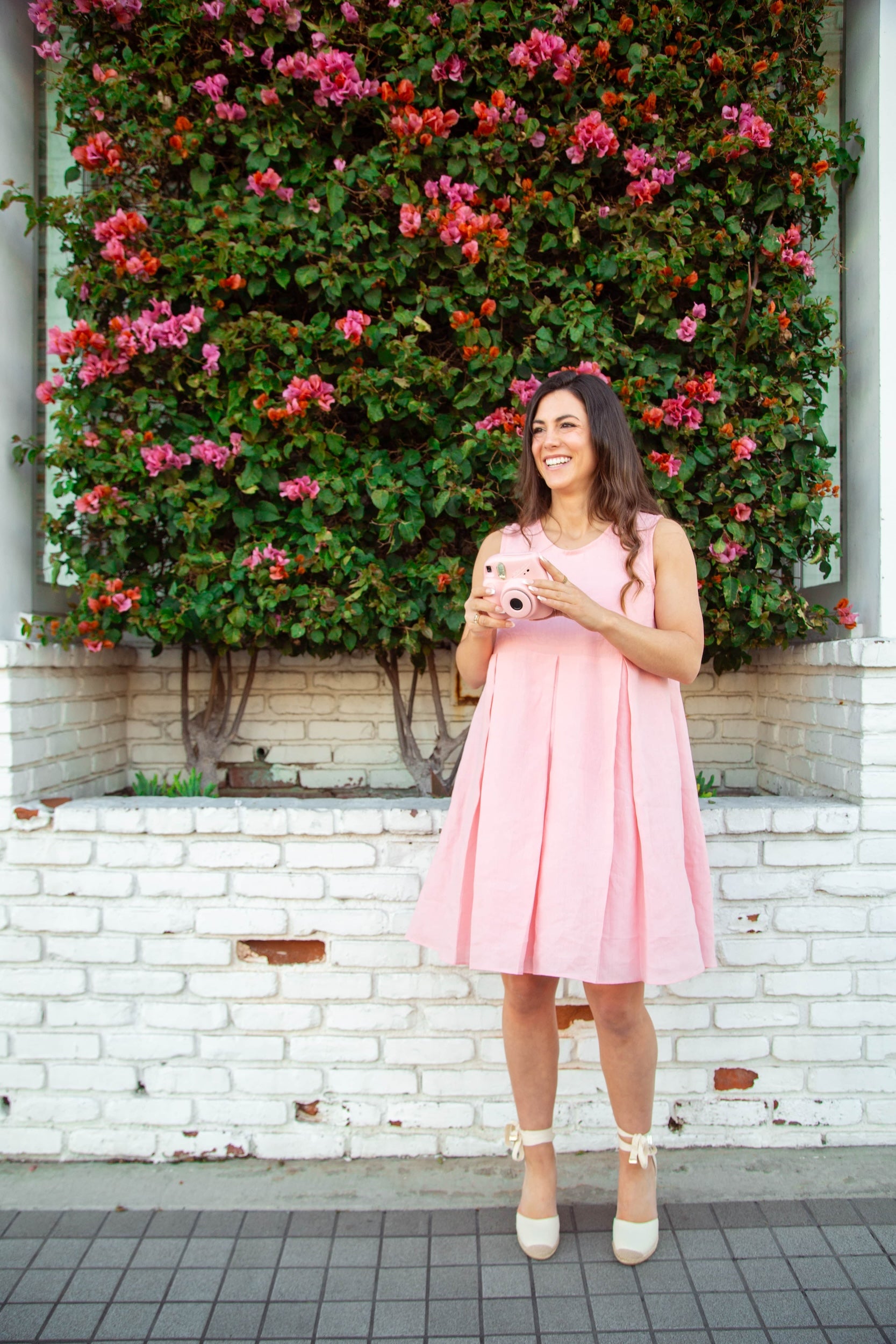How to Recognize Poor vs Good Quality Clothes with a Trip to Rodeo Drive! | 3 Tips | Emily Westenberger

Hi everyone, it’s Emily! There are several ways to check on the quality of clothes and you don’t have to be an expert.
Today I want to tackle:
- Fabrics
- Fibers
- Sewing and Stitching
I want to compare examples, so you see both sides. So I’ll be showing you bad examples from my own wardrobe from fast fashion brands - don’t worry I’ve learned from my past mistakes! These items were bought before I became a designer. I will also be showing you good examples from my own collection and taking you on a little trip to Rodeo Drive in Beverly Hills to show you more high quality examples. You can watch my YouTube video at the bottom of the page for visuals.
I want you guys to keep in mind that fast fashion clothing is extremely low quality due to use of cheap materials and labor. They are made to fall apart quickly, so you will go back and purchase more. In general, fast fashion is made to be thrown away after a couple of wears.
So let's get started!
1. Fabrics.
Low quality fabric is pretty easy to spot when you can feel it. A sign of a low quality fabric is that it can be almost transparent and sometimes you can move the threads around, meaning it was woven loosely. It may even pill after a few washes.
Most high-quality fabrics should retain their shape after being stretched. This is called "recovery" and is really important if the garment is meant to be tight-fitting or structured. If you pull a piece of clothing between your hands and it looks different or saggy after you let go, it will likely not fit the same way after a few wears or wash cycles.
Another example is good quality denim. You can tell its good quality if it actually feels stiff and uncomfortable at first, though it will eventually "break in" and last a long time.

A question I hear a lot is why a jacquard fabric is more expensive than a printed fabric. The answer? A jacquard is a woven fabric. The motif you see on it is integrated into the fabric. The yarns themselves are different colors. To achieve the motif woven into the fabric, a very complicated loom is involved. For prints, a layer of color is applied on top of the shirt. It is much easier and cheaper to achieve.
2. Fibers.
There are four natural fibers used most frequently: cotton, linen, wool, and silk.
Modal, viscose, tencel are of natural origin but are man made. Generally, natural fibers are lighter, more breathable and more comfortable on the skin.
Synthetic fibers: Acetate, polyester, rayon, acrylic, spandex. Acetate is like plastic. These fibers are chemically made, but they are more stable. They may not be the nicest on the skin. They tend to wrinkle less, but they may pill more. For example, acrylic is known to pill.

Just because something is natural doesn't mean it is high quality. A lot of manufacturers optimize their supply chain for fast manufacturing, and they skip on quality. You can tell when you wash the shirt, and it shrinks to a smaller size the first time you wash it.
Another thing to watch out for is a fiber tag that is incorrect. Sometimes they'll say it's made of a natural fiber, but after a few washes and wears, the pills start and don't go away. That garment could be blended with synthetic fibers. In fashion school, you actually burn the fabric to see how it reacts, and that’s how you determine fiber content.
Sometimes a blend of natural and synthetic fibers is better. It creates a better feeling on the skin but is more stable and easy to take care of.
3. Sewing and Stitching
Now let’s look at garments for real. You want the stitches to be small and not loose. If you can move the threads around like this then that is a sign of poor quality. The machine was not set up right.
The construction of a lining is another sign of good and bad quality. The lining needs to allow for movement. Bad quality clothes don't have a lining, and you can see all the pockets and stitching. It looks messy.

Let’s take a look at other designer clothes and head to Rodeo Drive.
Watch the Full YouTube Video Here:
What to watch next?
You can watch my video on how to style classics here. If you haven’t seen my video on fashion sketching, you can click here. Stay tuned for next week’s blog on How to Recognize Poor Vs Good Quality Clothes with a Trip to Rodeo Drive!
Follow me on:





